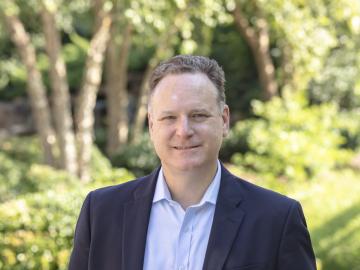Filter News
Area of Research
- (-) National Security (45)
- (-) Nuclear Science and Technology (27)
- Advanced Manufacturing (5)
- Biological Systems (1)
- Biology and Environment (102)
- Biology and Soft Matter (4)
- Building Technologies (2)
- Chemical and Engineering Materials (3)
- Chemistry and Physics at Interfaces (7)
- Clean Energy (168)
- Climate and Environmental Systems (7)
- Computational Biology (1)
- Computational Chemistry (5)
- Computational Engineering (1)
- Computer Science (3)
- Data (1)
- Earth Sciences (1)
- Electricity and Smart Grid (1)
- Energy Frontier Research Centers (7)
- Fuel Cycle Science and Technology (2)
- Functional Materials for Energy (8)
- Fusion and Fission (32)
- Fusion Energy (7)
- Geographic Information Science and Technology (1)
- Isotopes (21)
- Materials (122)
- Materials for Computing (13)
- Materials Synthesis from Atoms to Systems (8)
- Materials Under Extremes (7)
- Neutron Data Analysis and Visualization (2)
- Neutron Science (72)
- Quantum Condensed Matter (3)
- Quantum information Science (4)
- Renewable Energy (2)
- Sensors and Controls (2)
- Supercomputing (153)
- Transportation Systems (4)
News Type
News Topics
- 3-D Printing/Advanced Manufacturing (3)
- Advanced Reactors (4)
- Artificial Intelligence (6)
- Big Data (4)
- Bioenergy (2)
- Biology (3)
- Biomedical (1)
- Biotechnology (1)
- Buildings (1)
- Climate Change (4)
- Computer Science (10)
- Coronavirus (2)
- Cybersecurity (8)
- Decarbonization (2)
- Environment (3)
- Fusion (6)
- Grid (3)
- High-Performance Computing (3)
- Isotopes (2)
- Machine Learning (8)
- Materials (1)
- Materials Science (4)
- Molten Salt (1)
- Nanotechnology (1)
- National Security (22)
- Neutron Science (3)
- Nuclear Energy (18)
- Physics (1)
- Quantum Science (1)
- Security (5)
- Simulation (1)
- Space Exploration (1)
- Summit (1)
- Sustainable Energy (1)
- Transformational Challenge Reactor (2)
Media Contacts

A tiny vial of gray powder produced at the Department of Energy’s Oak Ridge National Laboratory is the backbone of a new experiment to study the intense magnetic fields created in nuclear collisions.

Thanks in large part to developing and operating a facility for testing molten salt reactor (MSR) technologies, nuclear experts at the Energy Department’s Oak Ridge National Laboratory (ORNL) are now tackling the next generation of another type of clean energy—concentrating ...

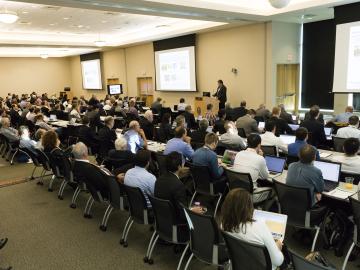
The third annual Molten Salt Reactor Workshop allowed leading voices on advanced reactors—including scientists from the national laboratory system, the Nuclear Regulatory Commission, reactor design firms and universities—to discuss current efforts in molten salt reactor work and pu...

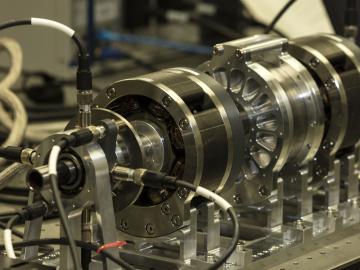
When it comes to a challenging application for embedded instrumentation and control, none quite beats an environment of molten salt at 700 degrees Celsius. But that is just the application chosen by scientists at the US Department of Energy’s Oak Ridge National Laboratory...
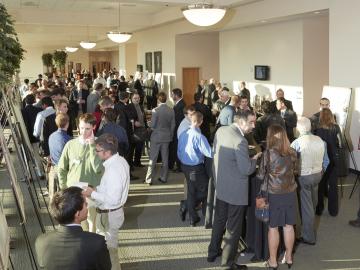
Renewed interest in molten salt technology was evident at a recent gathering of advanced nuclear reactor experts at the US Department of Energy’s (DOE’s) Oak Ridge National Laboratory (ORNL). Nearly 200 attendees from national labs, industry, utilities, reactor design firms,...
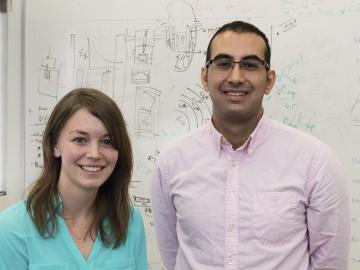
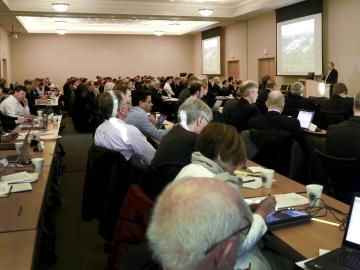
Moving advanced nuclear reactors from the drawing board to the field was the focus of the Advanced Reactors Technical Summit III, hosted by the Department of Energy’s Oak Ridge National Laboratory and attended by 180 experts from industry, government and academia. The conference, ...





